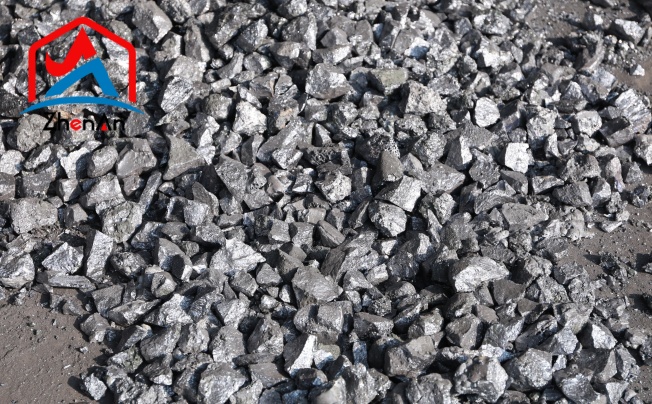Silicon, often regarded as the unsung hero of modern industry, is a versatile and indispensable chemical element that plays a crucial role in various sectors, from technology to construction. Its unique properties make it a sought-after material for countless applications, ranging from semiconductor manufacturing to solar panel production.
Differentiating between Ferrous and Non-Ferrous Metals
The primary factor that sets these two categories apart is the presence of iron in ferrous metals. Ferrous metals, such as iron and steel, contain a significant amount of iron in their composition, usually over 50%.
On the other hand, non-ferrous metals do not contain iron as a primary component. Instead, they may contain elements like aluminium, copper, zinc, or lead.
One key characteristic differentiating ferrous metals from non-ferrous ones is their susceptibility to rusting. Due to the high iron content in ferrous metals, they are prone to corrosion when exposed to moisture and oxygen. This rusting process can weaken the structural integrity of ferrous materials over time. In contrast, non-ferrous metals exhibit better corrosion resistance, making them highly valuable for applications where exposure to environmental elements is a concern.
Examples of Common Ferrous Metals and Non-Ferrous Metals
Ferrous metals encompass a wide range of materials used in various industries. Iron, one of the most abundant elements on Earth and a fundamental building block of steel production, is a primary example of a ferrous metal.
Steel itself is another prominent member of this category, known for its strength and versatility across the construction, manufacturing, and transportation sectors. Non-ferrous metals offer unique properties that make them indispensable in diverse applications.
Aluminium stands out as a lightweight yet durable non-ferrous metal widely used in aerospace engineering, packaging materials, and construction. Copper is another essential non-ferrous metal known for its excellent electrical conductivity and malleability—making it ideal for wiring systems in electronics and power generation infrastructure.
Why Silicon is Often Mistaken as a Ferrous Metal
Silicon's misconception as a ferrous metal can be attributed to several factors that contribute to its mistaken classification in the realm of metallurgy. Firstly, the appearance of silicon bears striking similarities to certain ferrous metals, such as iron and steel. Its metallic luster and greyish color can easily deceive the untrained eye into assuming it falls under the category of ferrous metals. This visual resemblance plays a significant role in perpetuating the misunderstanding surrounding silicon's true nature.
Furthermore, another reason behind the misidentification of silicon lies in its abundance in nature. Silicon is one of the most plentiful elements found on Earth, comprising a significant portion of the planet's crust. Its widespread presence in rocks, minerals, and even sand reinforces the notion that silicon might be classified as a ferrous metal due to its prevalence alongside traditional iron-based materials. This abundance can mislead individuals into believing that silicon shares characteristics typical of ferrous metals.
Applications in Electronics, Solar Energy, and Medical Technology
Evolving Electronic Applications
Silicon's exceptional properties have revolutionized the field of electronics, serving as the cornerstone material for microchips and integrated circuits. The semiconductor industry heavily relies on silicon due to its predictable behavior as a semiconductor and its compatibility with existing manufacturing processes.
From smartphones to computers and beyond, silicon's role in powering modern electronic devices cannot be overstated. Its ability to amplify or switch electronic signals with precision has enabled the development of increasingly complex and efficient electronic systems.
Illuminating Solar Energy Solutions
In the realm of renewable energy, silicon plays a pivotal role in harnessing solar power through photovoltaic cells. Solar panels utilize crystalline silicon wafers to convert sunlight into electricity efficiently.
Silicon's abundance on Earth and its ability to absorb photons make it an ideal material for solar energy applications. As advancements continue to enhance the efficiency and affordability of solar technology, silicon remains at the forefront of driving sustainable energy solutions worldwide.
Pioneering Medical Innovations
Beyond electronics and energy generation, silicon finds innovative applications in medical technology and healthcare. Silicon-based materials are used in biomedical implants, drug delivery systems, diagnostic tools like biosensors, and even medical imaging equipment such as MRI machines.
The biocompatibility of silicon makes it well-suited for interfacing with biological systems while offering durability and stability critical for medical devices' long-term performance. As researchers explore new frontiers at the intersection of technology and healthcare, silicon continues to enable groundbreaking advancements that improve patient care outcomes around the globe.
The Role of Silicon in Industry
Utilizing Silicon for Making Alloys like Ferrosilicon
Silicon plays a crucial role in the manufacturing of various alloys, with one of the most prominent being ferrosilicon. Ferrosilicon is an alloy composed primarily of iron and silicon, typically containing around 15%–90% silicon. This alloy is widely used in the steel industry as a deoxidizer and alloying element to enhance the properties of steel.
Adding ferrosilicon during the steelmaking process, helps remove impurities such as oxygen and sulfur, improving the quality and strength of the final product. Additionally, ferrosilicon is also utilized in the production of stainless steel, where its high silicon content contributes to corrosion resistance and heat resistance properties.
Silicon's Role in Creating High-Strength Materials for Construction
In the construction industry, silicon plays a vital role in creating high-strength materials that are essential for building infrastructure and architectural projects. Silicon-based materials such as silicones and silicates are widely used as sealants, adhesives, and coatings due to their excellent bonding properties and durability. Silicones, which are synthetic polymers containing silicon atoms along with carbon, hydrogen, and oxygen, are known for their flexibility over a wide range of temperatures and resistance to moisture and chemicals.
These characteristics make them ideal for sealing joints in buildings to prevent water infiltration or air leakage. Furthermore, silicon-based composites like silica fume are employed as additives in concrete mixtures to enhance strength and durability.
Silica fume consists of very fine particles recovered from the production of silicon metal or ferrosilicon alloys. When added to concrete mixes, silica fume fills voids between cement particles, leading to denser concrete with increased compressive strength.
This not only improves the load-bearing capacity of structures but also enhances their resistance to chemical attacks and harsh environmental conditions.






